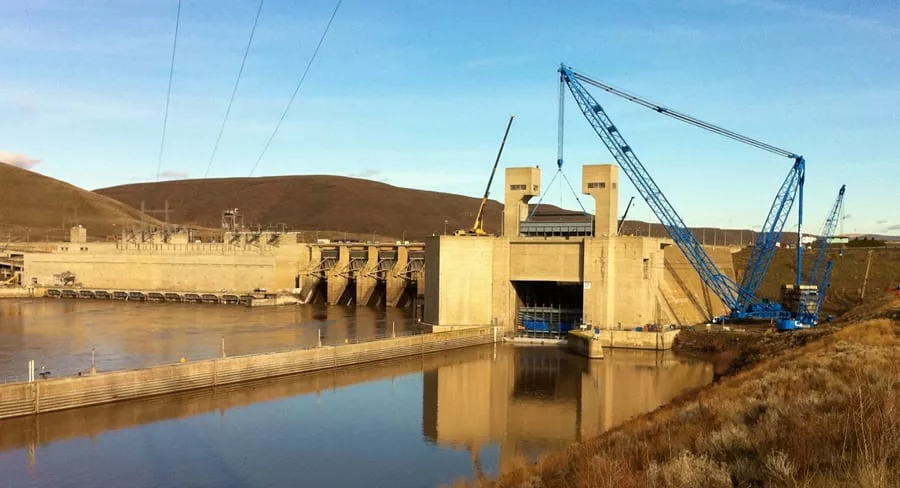
Home » Lampson International beating odds for family-owned businesses
Lampson International beating odds for family-owned businesses

September 13, 2018
By Don C. Brunell
It is impossible to ignore Lampson International’s monstrous cranes in its Pasco assembly yard. Those gantries stand out like the Space Needle in Seattle and reach over 560 feet into the sky.
Like the Space Needle, Lampson is built on a solid footing. Last month, Construction Review Online, or CRO, ranked Lampson as the world’s third largest crane company.
“Lampson International has been a world leader in the Heavy Lift and Transport industry for over 65 years. Initially started as a small drayage company, they have quickly grown into one of the most innovative and respected providers of equipment and full-service rigging services in the United States and abroad,” CRO stated.
It is a very innovative family-owned manufacturer which has defied the survivability odds. According to The Family Firm Institute, only about 30 percent of family-owned businesses survive into the second generation and fewer than 12 percent are still viable into the third generation.
As the third generations move into leadership, the company is well positioned for growth and success. Today, it has a fleet of hoists capable of lifts from 350 to 3,000 tons.
It was started in 1946 by a hard-working, creative couple, Neil and Billie Jane Lampson. They began as a small crane and drayage company in the Tri-Cities. Today, it is still family owned, with offices in Canada and Australia and about 300 employees worldwide.
Lampson’s drayage business was built around hauling and hoisting heavy loads on the Hanford Nuclear Reservation.
In 1978, Lampson engineered, manufactured, assembled and tested the first Transi-Lift for use at nuclear construction sites in the United States. It was to become the company’s signature product just like Boeing’s heavy lifters, the 747 and 777.
The Transi-Lift is a crawler (tracked) transporter on a mobile foundation and equipped with multi-drum hoists. It exceeded all expectations and could be described as a giant crane sitting on an Army tank platform.
By the time, the Lampson’s son, Bill, was named president and CEO in 1990, the company was building “megacranes” for large construction projects worldwide.
One of those projects is Seattle’s 45-story Hyatt Regency hotel completed last year. The new hotel, featuring more than 1,200 guest rooms and 105,000 square feet of meeting and ballroom space, takes up three-quarters of a block.
Another is in the south Australian mining city of Port Pirie. Nyrstar, which mines and refines lead, zinc and other metals, rebuilt its 120-year-old smelter to reduce lead and other metal emissions. It was a $514 million project which required Lampson to lift mammoth components from ships onto wheeled ground crawlers and then hoist them into permanent positions.
Lampson is successful because it hires (and retains) dependable skilled workers — some of whom are second and third generation. It is innovative and the cab of today’s company cranes looks like a fighter cockpit complete with joysticks and modern high-tech panels.
Bill Lampson brought his son, Peter, and daughter, Kate, into the business — a smart move considering only about three percent of all family businesses operate into the fourth generation.
Family-owned businesses are the backbone of the American economy. They account for 64 percent of U.S. gross domestic product, generate 62 percent of the country’s employment, and account for 78 percent of all new job creation.
Texas A&M University took a look at the S&P 500 for a full business cycle, and found that family-owned businesses beat other firms in revenue and employment growth. Other researchers found they are less likely to lay off employees regardless of financial performance.
Family-owned businesses are vital to America and their contributions should not be ignored.
Don Brunell is a business analyst, writer and columnist. He is retired from the Association of Washington Business. He can be contacted at [email protected].
Local News
KEYWORDS september 2018






